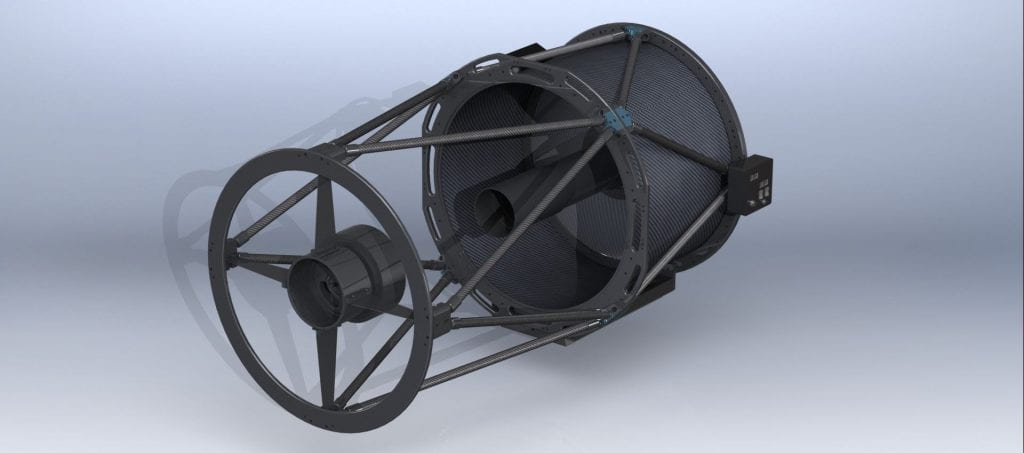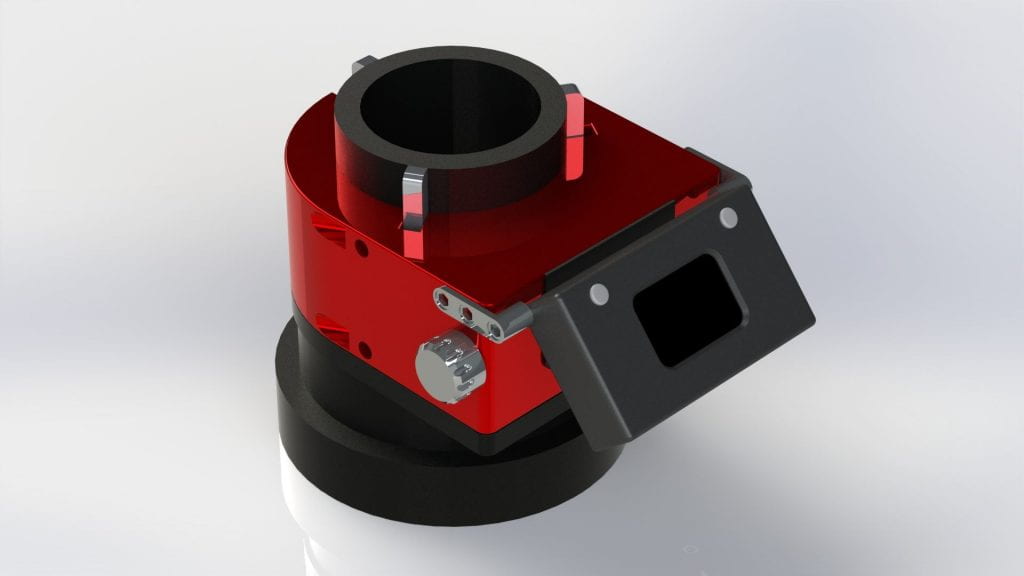How Does a Telescope Work?
Telescope Basics
Telescopes are tools that are used to magnify far away objects. They function by manipulating light using curved mirrors or lenses. The light gets concentrated into one point, which is what we see when we look through a telescope. The Dusty Star Observatory has a 20-inch Corrected Dall Kirkham telescope, a type of reflecting telescope. This type of telescope uses mirrors to reflect light into an eyepiece or a computer which can display the telescopes view on a computer or television screen.
Image Source: Glacier National Park Conservancy
Reflection vs. Refraction
Telescopes take advantage of a property of light called refraction to see far away objects. Refraction occurs when the path of a light wave is changed by passing from one medium to another. Reflection occurs when light bounces off a surface, like a mirror. When light waves come from far away sources such as stars and galaxies, the light travels in “parallel lines”. Curved mirrors or lenses within telescopes can focus light into one point, called the focal point. This concentrated image appears magnified when seen through a telescope camera or eyepiece.
Click the picture to see each part of the telescope and what it does.
The pier serves as the stand for the telescope. It provides a sturdy base for the telescope and eliminates vibrations. Telescope piers must be a specific height when being used inside an observatory dome to ensure the telescope doesn't hit anything. The german equatorial mount moves the telescope so that it can keep celestial objects in view. The mount is aligned with the skies axis of rotation, the North star. Finding an object in the night sky relies on three variables. 1. Altitude is an angle that corresponds with your latitudinal coordinate. This helps to align the telescope with the North Star. 2. Declination corresponds to the angle from the North Star to a celestial object. It is measured in degrees, minutes, and seconds. 3. Right ascension corresponds to an angular distance in the sky. It is measured in hours, minutes, and seconds. Declination and right ascension are essentially mathematical polar coordinates, where the origin is the North Star. Aligning the telescope with the axis of rotation allows for easy tracking of celestial objects, since the telescope only has to rotate around the North Star. The observatory has a Software Bisque Paramount ME II, which allows for manual and remote control. The main part of the telescope is the optical tube. It houses all components, such as lenses, mirrors, and fans. The telescope contains two curved mirrors which concentrate the image into one spot, called the focal point. The diameter of the optical tube is called the aperture, and the larger the aperture, the clearer and brighter objects in the sky will appear. The optical tube also contains a heater and control panel for the telescope. The heater keeps dew and condensation from forming on the mirrors, while the control panel controls the internal fans on the telescope. The fans help to circulate air within the telescope. The telescope itself is a 20-inch Planewave corrected dall-kirkham telescope. The finderscope is a smaller telescope or sight that is mounted to the side of a telescope. They often have lower magnification but provide a wider field of view of the night sky. Finderscopes align with the telescope's line of sight. They are used for quickly aiming the telescope at objects in the sky then fine-tuning the aim with the full-size telescope. The Observatory’s telescope uses a red laser sight to help with aiming. The focuser helps to adjust the clarity of the telescope's image. Focusers can be manually adjusted with knobs or controlled remotely. One side of the focuser attaches to the rear of the telescope, while the other side connects to a camera or eyepiece. The focuser also contains an LCD screen to display information about the image quality. The telescope contains a moonlite nitecrawler focuser. The camera shows a live view of the telescope on a computer screen. It also gives astronomers the ability to take pictures or videos through the telescope. The observatory’s camera is 16 megapixels and has the ability to take long-exposure photographs, an essential function in the world of astrophotography. Long exposure photographs capture more detail in the sky by letting light into the camera for an extended period of time. The camera can also take full HD video. The telescope contains a Mallincam skyraider ds16c camera. Since the telescope and all it's components can weigh a considerable amount, the equatorial mount needs to be balanced in order to function properly. The counterweight for the dusty star observatory telescope weights about 140lbs. By properly balancing the telescope, stress is taken off the motors in the mount, allowing for smoother rotation and easier use.
Telescope Pier

German Equatorial Mount
The Optical Tube

Finderscope

Focuser

Camera / Imager

Counterweights

Telescope Time Travel
Objects in the night sky are very far away. Despite light being the fastest thing in the universe, it still takes a long time for it to reach us on Earth. If you traveled at the speed of light, you could travel 93 million miles to the Sun in 8 minutes. The farthest visible galaxy in the universe is GN-z11. It’s 32 billion light years away, or 188 sextillion miles away. But just how far is that?
GN-z11 is so far away, light from the galaxy takes 13.4 billion years to reach Earth. This means we see the galaxy as it appeared 13.4 billion years ago and humanity won’t be able to see it as it is right now for 13.4 billion years. Pictured to the right is the Andromeda Galaxy (M31), a large galaxy near us. At 2.5 million light-years away, we see it as it was 2.5 million years ago.
Distance in space is almost incomprehensible to humans. However using telescopes, we can relate distance and time, while watching the universe unfold from before humanity even existed.
Source: NASA/JPL-Caltech
For More Information
Click here for more beginner level descriptions and here for more detailed descriptions.
More information about NASA Telescopes and GN-z11, Andromeda (M31)
